How to Choose Good Honey
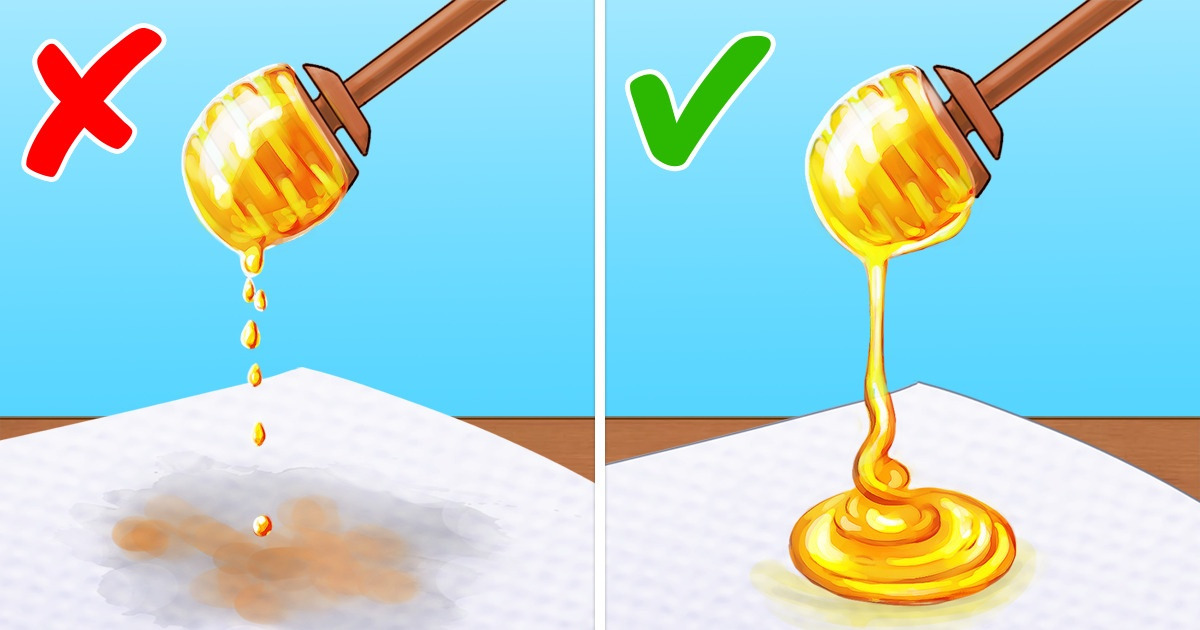
Thanks to its benefits, natural honey is highly valued in medicine, the beauty industry, and dietetics. It has antioxidant and antiseptic properties and is a healthy alternative to sugar. But all this applies only to natural honey without additives.
5-Minute Crafts would like to tell you about how to distinguish natural honey from its substitutes.
Particularities of natural honey
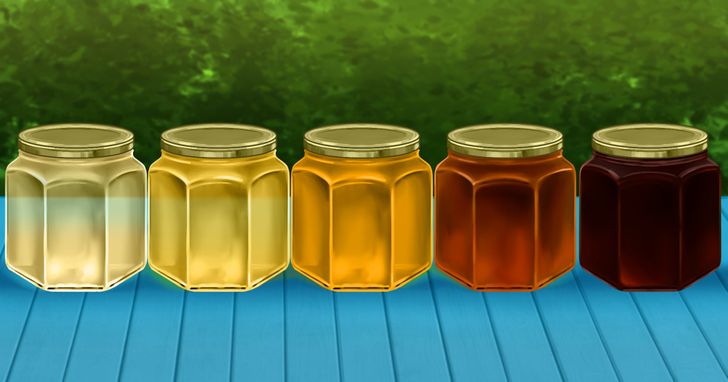
- Color
The color of honey directly depends on the flowers from which it was collected by bees. The color can vary from dark to light brown, which doesn’t indicate its quality in any way. Over time, honey can also change its color slightly and become darker. - Sweetness
Natural honey contains 2 types of sugar: fructose and glucose, which makes it a little sweeter than white sugar.
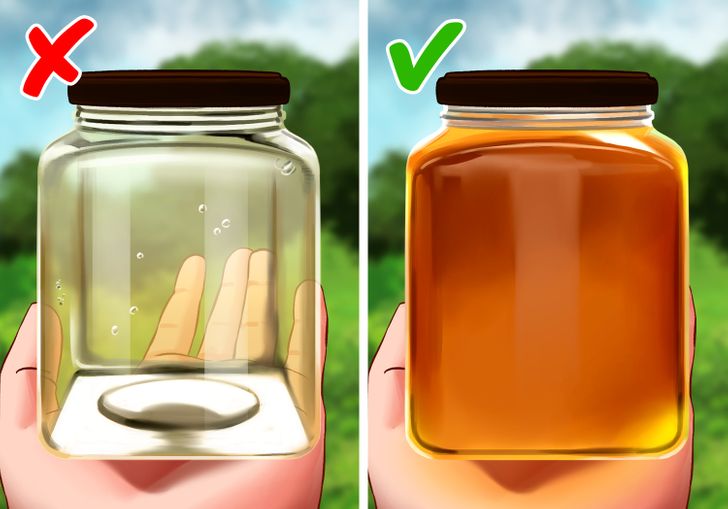
- Clarity
Real honey contains pollen, which doesn’t make it appear very clear. The filtration process removes debris like bee parts and wax but not pollen. When choosing honey, keep in mind: the clearer honey is more processed.
However, note that the texture of good honey is homogenous. If you notice that the product is divided into 2 layers, this may indicate that this is immature honey, and it can’t be stored for a long time, so it should be consumed within a few months. - Water content
The long (and with proper storage, infinitely long) shelf life of honey results from the low content of water in the natural product. It’s believed that good honey contains no more than 18% moisture, which prevents bacteria and microorganisms from reproducing in it.
❗ Honey is hygroscopic, which means that it easily absorbs moisture from the air when the container is open. If stored improperly, the fermentation process can start, which reduces the shelf life of honey.
✅ To find out which honey contains less water, turn 2 jars of honey of the same temperature upside down and watch how quickly air bubbles rise inside. The honey with bubbles that reach the bottom of the jar faster has more water.
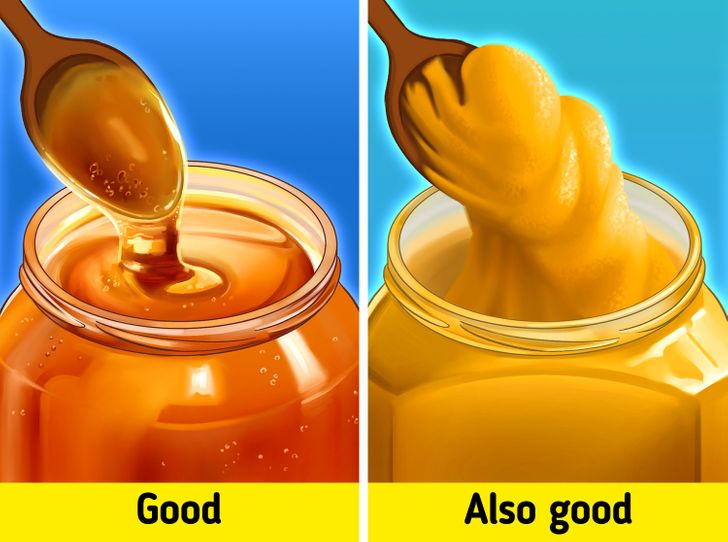
- Crystallization
It’s believed that honey should not crystallize within 3 months from the first time the jar was opened, but this is not always true. Some types of honey can stay liquid for a long time, while others can crystalize after a couple of weeks. This doesn’t indicate the quality of honey and how natural it is. - Aroma
Real honey always has a pleasant, sweet, floral aroma. A sour smell or the absence of any aromas may indicate that you are holding an imitation.
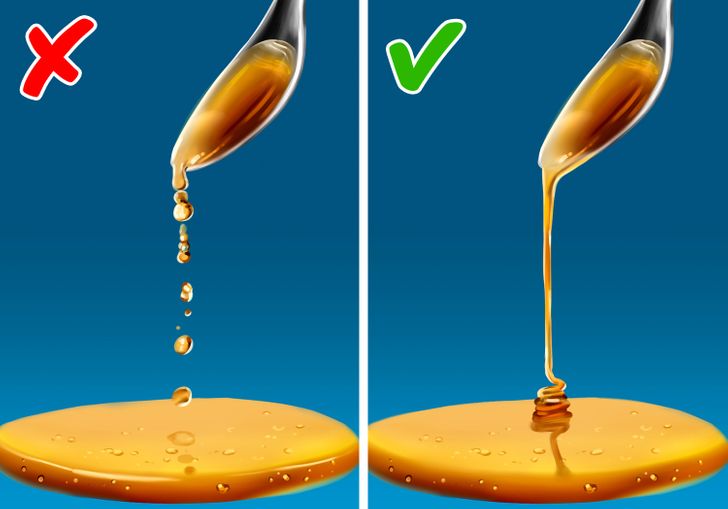
- Viscosity
Dip a spoon or thin stick into the container with honey, and then observe how it flows back. Real honey descends in a continuous thread and forms a small hill on the surface, which then slowly spreads from the center to the edges. The counterfeit will behave like glue, dripping down and forming splashes. - Taste
Honey often has a slightly spicy, tart taste, but dissolves evenly without leaving residue on the tongue. If you feel grains of sugar on your tongue, the honey is most likely fake.
How to find out whether the honey is natural
If the characteristics mentioned above were not sufficient at helping you identify whether the honey is natural, try these tricks.
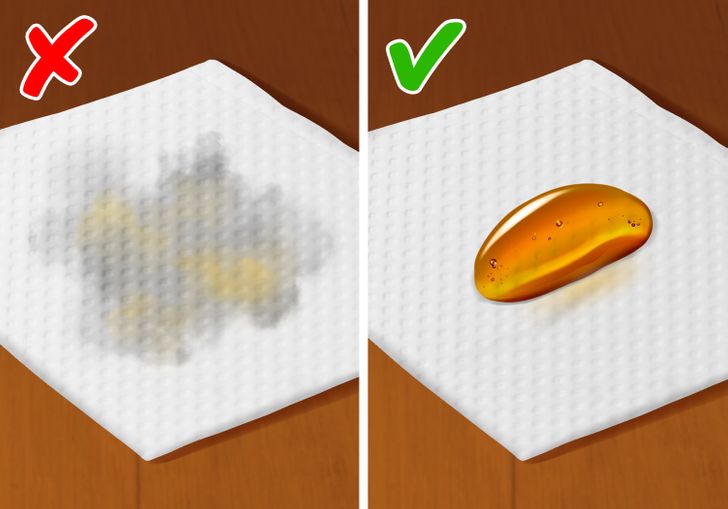
1. Take a sheet of uncoated, preferably porous, paper and drip some honey onto it. If a drop spreads on the paper, forming a damp spot, or seeps through it, then you have fake honey.
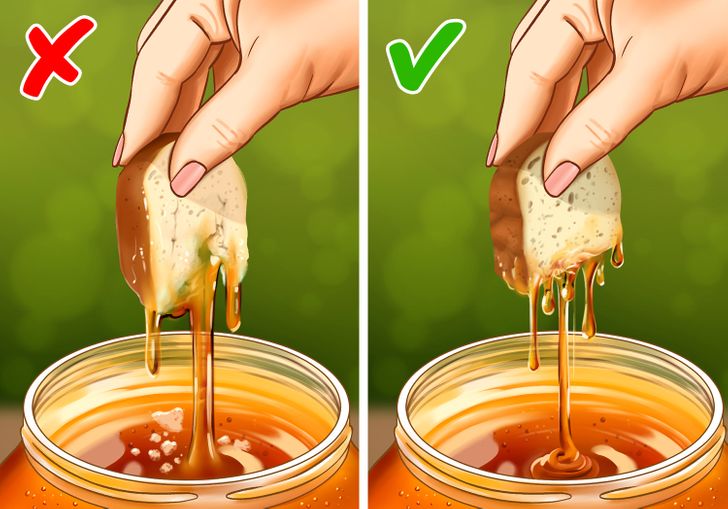
2. Leave a piece of bread in the honey jar and take it out after about 10 minutes. Due to the low water content in natural honey, the bread won’t soften but will remain hard. Otherwise, you don’t have honey — you have sugar syrup.
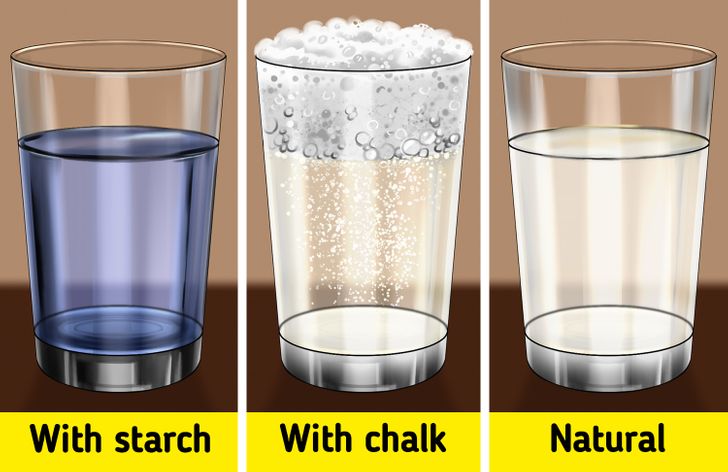
3. Take 2 glasses of water and dissolve a small amount of honey in each of them. Add 4 to 5 drops of iodine in the first one, and the same amount of vinegar in the second one. If the solution in the glass with iodine turns blue, it means that the manufacturer used starch to make the product. If water hisses in the glass with vinegar, chalk has been added to the product. If the honey is natural, nothing will happen.
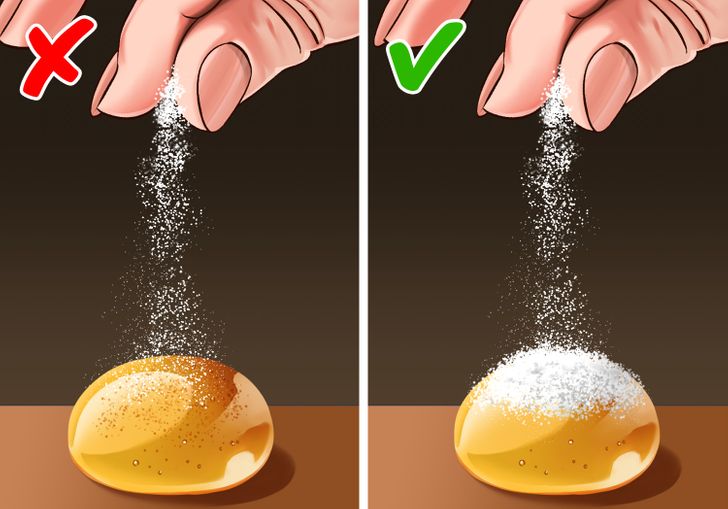
4. Drop some honey on a hard surface and then lightly sprinkle it with starch. If the starch remains on top of the droplet with a white cap, the honey is good. Bad honey, on the other hand, will absorb the starch.
How to store honey
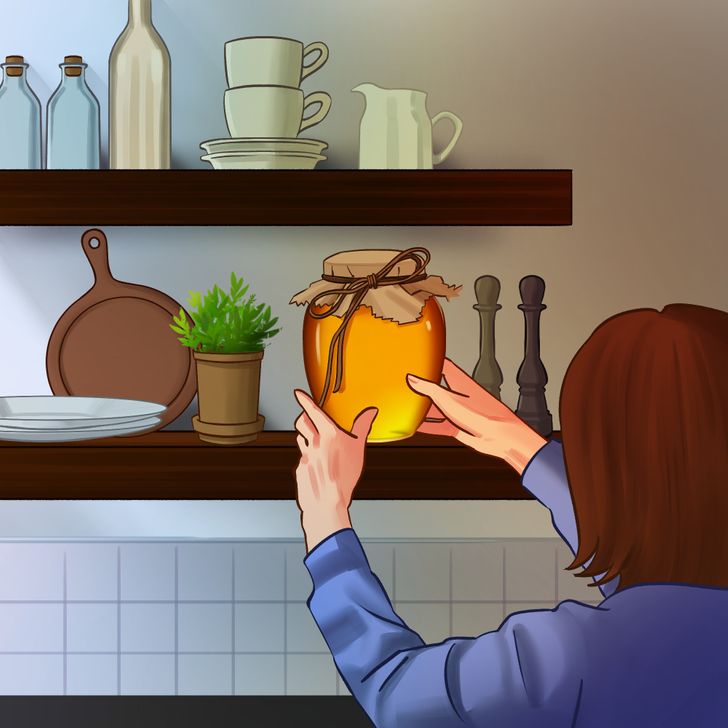
- Not all containers are suitable for the proper storage of honey. Honey contains acids that can cause the oxidation of metal surfaces, which will reduce the beneficial properties of the product. It’s best to store honey in glass, clay, or wooden containers, which must be airtight.
- Natural honey contains vitamins and minerals that can’t stand high temperatures. If you decide to melt crystallized honey, don’t bring the temperature up to 140°F in order to preserve the beneficial properties of the product. Also, don’t store honey near sources of heat, such as a stove or radiator.
- It’s best to store honey in a cool place away from sunlight. Then it will not only remain tasty but also retain its beneficial properties.